Do you have a question about the Lifebreath 155MAX series and is the answer not in the manual?
Critical safety advice, warnings, and precautions for operation and installation.
Important general information and notes regarding unit functionality and specifications.
Explains the advantages and key features of the Lifebreath HRV system.
Details the different operating modes and the function of the dehumidistat.
Defines technical terms and outlines the product warranty terms.
Covers setting fan speed, modes, and dehumidistat on the digital control.
Explains how to synchronize humidity settings and understand control indicators.
Details 7/24 programmable ventilation and advanced features of the programmable control.
Guides on setting date/time, programming daily events, and running the control.
Describes the 20/40/60 minute timers, 20 minute timer, and dehumidistat timer functions.
Step-by-step guide for inspecting, cleaning filters, core, motors, and ducts.
Critical safety warnings to follow before and during any maintenance tasks.
Engineering data, performance charts, and dimensions for the 95MAX model.
Engineering data, performance charts, and dimensions for the 155MAX model.
Engineering data, performance charts, and dimensions for the 155MAX RX model.
Engineering data, performance charts, and dimensions for the 155ECM model.
Engineering data, performance charts, and dimensions for the 200MAX model.
Engineering data, performance charts, and dimensions for the 200MAX RX model.
Engineering data, performance charts, and dimensions for the 195DCS model.
Engineering data, performance charts, and dimensions for the 195ECM model.
Engineering data, performance charts, and dimensions for the 300DCS model.
Explains simplified, partially dedicated, and fully dedicated installation approaches.
Provides guidance on duct sizing, material selection, and installation best practices.
Illustrates the simplified installation method connecting to furnace return air.
Covers duct sizing principles and the necessity of a backdraft damper.
Illustrates drawing stale air from specific home areas and connecting to furnace return.
Covers duct sizing principles and the necessity of a backdraft damper.
Illustrates a standalone system drawing stale air and supplying fresh air to different zones.
Highlights critical points and notes for the fully dedicated installation method.
Guides on selecting a suitable installation location and safely suspending the unit.
Instructions for ensuring the unit is level and properly secured for operation.
Details HRV condensate drainage, trap requirements, and installation.
Discusses adjustable grilles for balancing and specific grille types like Kitchen and Techgrille.
Describes different grille fittings for rough-in, quick mount, and ceiling/wall installations.
Details placement requirements for intake and exhaust weatherhoods and installation steps.
Step-by-step guide for mounting the control panel and connecting its wiring.
Explains how to operate timers, set lockout mode, and connect them to the unit.
Instructions for wiring mechanical timers using dry contact connections.
Guides on interlocking the HRV with furnace or air handler operation for continuous ventilation.
Details setting standby mode and adding dry contact controls like dehumidistats.
Explains why balancing is critical and introduces airflow measuring tools like magnehelic gauges.
Outlines essential preparation steps before performing air balancing procedures.
Detailed steps for measuring airflow using a pitot tube and magnehelic gauge.
Provides a method and examples for calculating airflow in cubic feet per minute (CFM).
Guides on using door ports for airflow measurement and balancing.
Explains how to use the airflow reference charts for specific models.
Instructions for installing and using balancing collars on specific HRV models.
Lists and describes various kits and instruments used for airflow balancing.
Lists common HRV problems like poor airflow, humidity, and frosting, with corresponding solutions.
Provides a wiring diagram for most models, including defrost system and auto-transformer details.
Wiring diagram specific to ECM motor models, including control interface and defrost.
Section for the installer to fill out regarding contractor, serial number, and installation date.
| Frequency | 60 Hz |
|---|---|
| Power Consumption | 78 W |
| Weight | 28 lbs |
| Supply Voltage | 120 VAC |
| Airflow Capacity | 155 CFM |
| Voltage | 120 VAC |
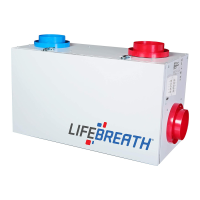
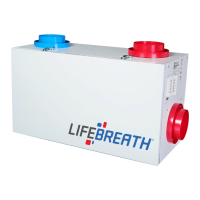
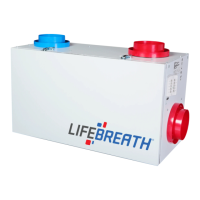

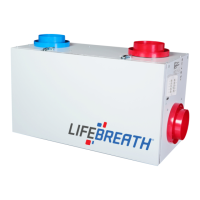
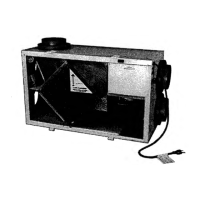

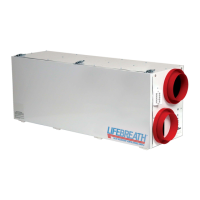
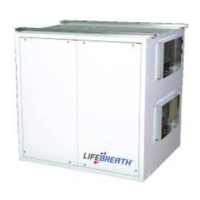
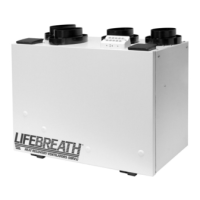


